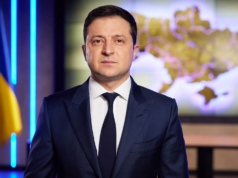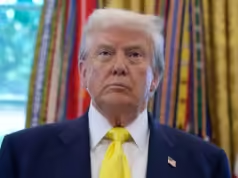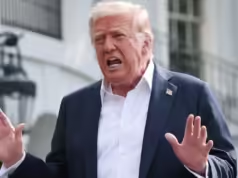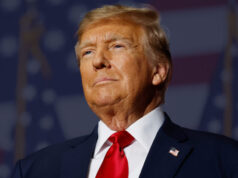Malaysia’s Kuala Lumpur — As tensions between the two largest economies in the world continue to rise, President Donald Trump made his first stop in Malaysia on Sunday. The trip will take him to three countries in Asia and is likely to end with a much-anticipated meeting with Chinese President Xi Jinping.
“Trump the mediator is the first message. According to Victor Cha of the Center for Strategic and International Studies, the second is Trump, the moneymaker. “And then, of course, with the meeting with China, I think what everyone is expecting is that there will be an effort to de-escalate or put a pause on the situation, but probably not a big trade deal.”
The week is anticipated to be dominated by trade. Trump stated on Friday aboard Air Force One that he would support American farmers if he was unable to come to an agreement with China. He also stated that he would speak with Xi about the current conflict between Russia and Ukraine and that he would like China to “assist us.”
Although the White House has stated that no meeting is scheduled, the president also implied that he was hoping to meet with North Korean leader Kim Jong Un.
Trump remarked, “You know, they don’t have a lot of telephone service,” before asking reporters to “get the word out.”
Trump will first meet with Malaysian Prime Minister Anwar Ibrahim in Kuala Lumpur before going to a working dinner with Association of Southeast Asian Nations leaders. The summit’s theme is “inclusivity and sustainability,” which Malaysia, this year’s ASEAN chair, has chosen.
Trump only made one appearance to the yearly ASEAN meeting during his first term.
According to the White House, Trump will also attend the signing of a peace deal between Thailand and Cambodia, whose violent border dispute he has claimed responsibility for resolving.
In between the Kuala Lumpur summit and South Korea’s Asia-Pacific Economic Cooperation meeting, Trump will make his fourth official trip to Japan, where he will meet with Japanese Emperor Naruhito and speak with the country’s new prime minister, Sanae Takaichi.
While in Japan, which is the country that hosts the most U.S. service members worldwide, Trump will also visit American troops and meet with business executives.
Trump developed a close personal relationship with Takaichi during his first term, and Takaichi is a conservative protégé of the deceased former prime minister Shinzo Abe.
She promised Friday to increase defense spending two years ahead of schedule, to 2% of GDP by March. Trump, who has pushed for allies to pay more, is certain to commend the increased aim.
Trump is wrapping off his trip in South Korea, where he will speak to business executives at the Asia-Pacific Economic Cooperation forum’s annual gathering on Wednesday. He will also meet with South Korean President Lee Jae Myung one-on-one and attend a leaders dinner.
Although China has not yet confirmed the meeting, the White House said Trump is also scheduled to meet with Xi while in South Korea.
With negotiators still working out the specifics of accords with South Korea and Japan and moving closer to agreements with China and Malaysia, trade is at the top of the agenda at every stop. After Trump threatened new 100% tariffs on Chinese imports and other trade restrictions beginning Nov. 1 in reaction to China’s increased export controls on rare earth minerals and related technologies, U.S. and Chinese delegations met in Malaysia over the weekend to discuss how to proceed.
Cha pointed out that Trump is missing the formal APEC sessions, the East Asia Summit, and the U.S.-ASEAN leaders meeting. “It’s not the U.S. president coming to Asia to meet the multilateral schedule; it’s the U.S. president coming to Asia and then bending the multilateral schedule around his schedule,” Cha said.
Regional leaders, however, are keen to participate, Cha added.
“Everyone still wants to make a deal with the president of the United States,” he stated. “They will attempt to reach an agreement to accomplish their shared goal of tariff relief.”
A senior administration official stated that China’s purchases of Russian oil will also be discussed during the meeting with Xi. Trump also stated that he intends to bring up the subject of fentanyl, accusing China of not stopping the flow of precursor chemicals. Trump stated that he also anticipates talking about Taiwan, the autonomous island democracy that Beijing asserts is its territory.
Trump said Friday, “We have a lot to talk about with President Xi, and he has a lot to talk about with us.” He also said he expected the meeting to be “good,” despite his repeated threats to cancel it due to trade tensions, such as China’s suspension of buying American soybeans.
According to someone with knowledge of the meeting planning, both leaders want the conference’s tactical and visual aspects to go smoothly.
However, experts cautioned about the potential outcomes of a leader-level encounter.
According to Sun Chenghao, a fellow at Tsinghua University’s Center for International Security and Strategy, “high-level exchanges with China during Trump’s first term did not prevent him from later taking a harder line.” Thus, it is important to avoid exaggerating the symbolic importance of summit diplomacy.
When Trump made an unexpected trip to the demilitarized zone separating the two Koreas earlier this week in an attempt to resurrect nuclear discussions that had broken down, a senior administration official rebuffed rumors that he could repeat his 2019 meeting with North Korean leader Kim. Trump stated he “would like” to meet with Kim before departing Washington on Friday, but he was uncertain if it would take place during this trip.
Kim has only bolstered his weapons programs since Trump’s first term, and he claims he will only engage in negotiations if the United States acknowledges North Korea as a nuclear state.
As he started his trip to Asia on Friday, Trump remarked, “I think they are sort of a nuclear power,” possibly setting the stage for a potential encounter. “I’ll say that they have a lot of nuclear weapons.”







